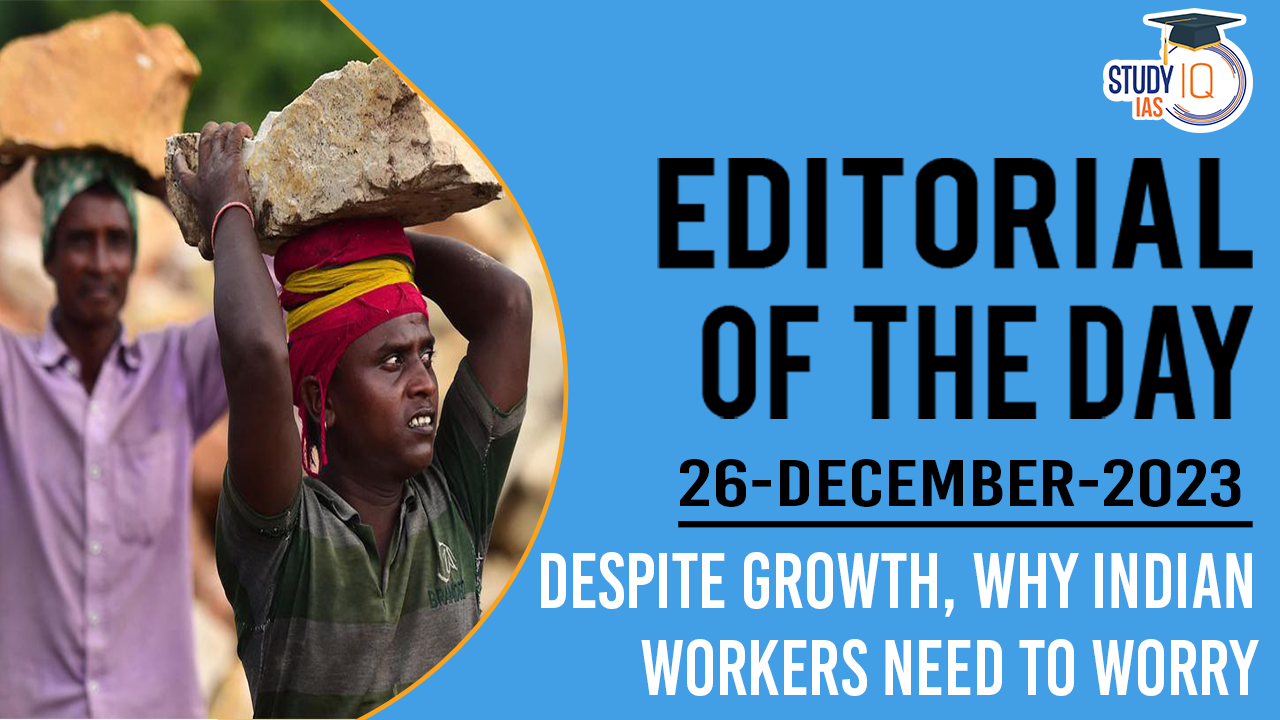Context: Despite surpassing optimistic projections, India’s second quarter GDP growth reveals contradictions, notably the lack of proportional productive employment opportunities for the growing labour force, intensifying the employment challenge annually.
We’re now on WhatsApp. Click to Join
Concerns Regarding India’s Workforce
- Limited Productive Employment: The rapid increase in the workforce hasn’t led to a corresponding growth in productive employment, especially in the manufacturing sector.
- For e.g. Only a slight increase of about two million jobs per year in the manufacturing sector.
- Employment in Low-Productivity Sectors: Many new workers are employed in less productive sectors like agriculture, not in higher-productivity areas.
- For e.g. A larger rise of over eight million in the less productive agriculture sector.
- Self-Employment and Women Workers: A majority of the new workforce entrants are self-employed or women, often engaged in small-scale or unpaid roles, rather than in regular or well-paid jobs.
- For e.g. Nearly seven out of 10 new workforce entrants are self-employed, and a similar proportion are women, mainly from rural areas.
- Low Earnings in Self-Employment: Self-employed women, particularly in rural areas, earn significantly less than their male counterparts, with their real incomes barely rising.
- Self-employed rural women earned an average of Rs 5,056, compared to Rs 13,831 for men (April-June 2023).
- Rising Demand for NREGA Work: There’s an increasing reliance on NREGA, suggesting financial distress and limited job options, particularly for women.
- For e.g Workers under NREGA rose from 7.5 crore (2017-18) to 8.75 crore (2022-23).
- Surge in Unsecured Personal Loans: Households are increasingly taking out unsecured personal loans, indicating strained incomes and potentially financing self-employment, with potential risks to the financial sector.
- For e.g. Housing loans increased from Rs 16.8 lakh crore (March 2022) to Rs 20.53 lakh crore (September 2023).
- Uneven Private Sector Investments: Despite public sector initiatives, private sector investment remains inconsistent, with new project announcements declining and reliance on government capital expenditure.
- Investments in Physical Assets: Affluent households are investing more in real estate rather than industry, suggesting a skewed investment pattern.


 GPS Spoofing and Its Impact in India: A ...
GPS Spoofing and Its Impact in India: A ...
 Amrit Gyaan Kosh Portal: A Comprehensive...
Amrit Gyaan Kosh Portal: A Comprehensive...
 UpLink Initiative: Launched by World Eco...
UpLink Initiative: Launched by World Eco...





















